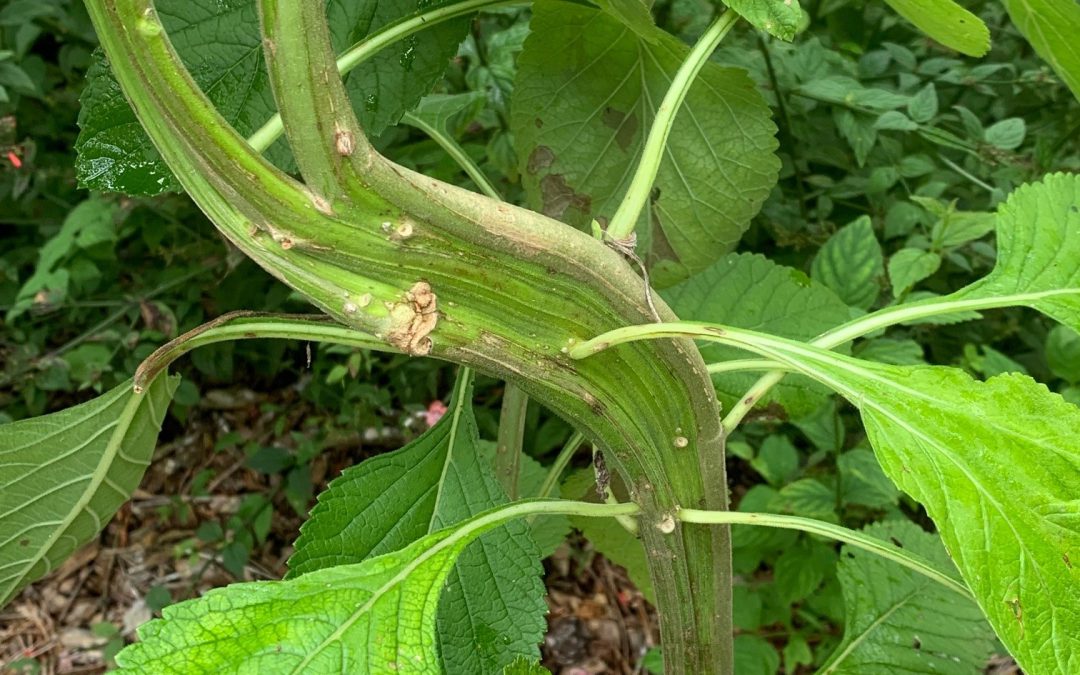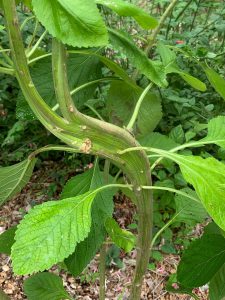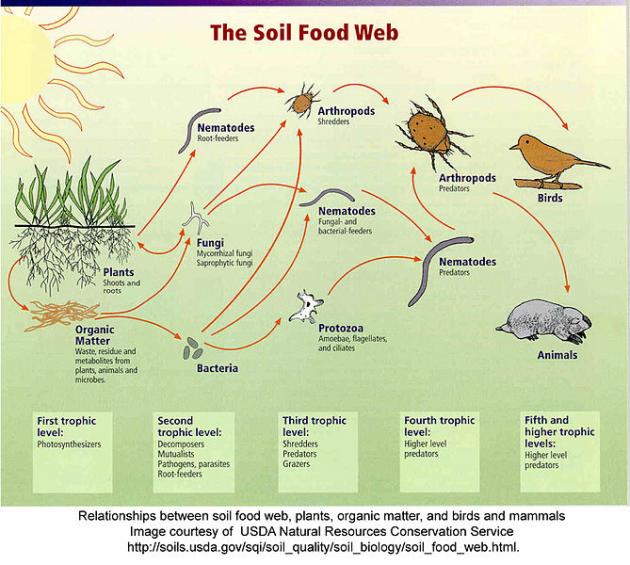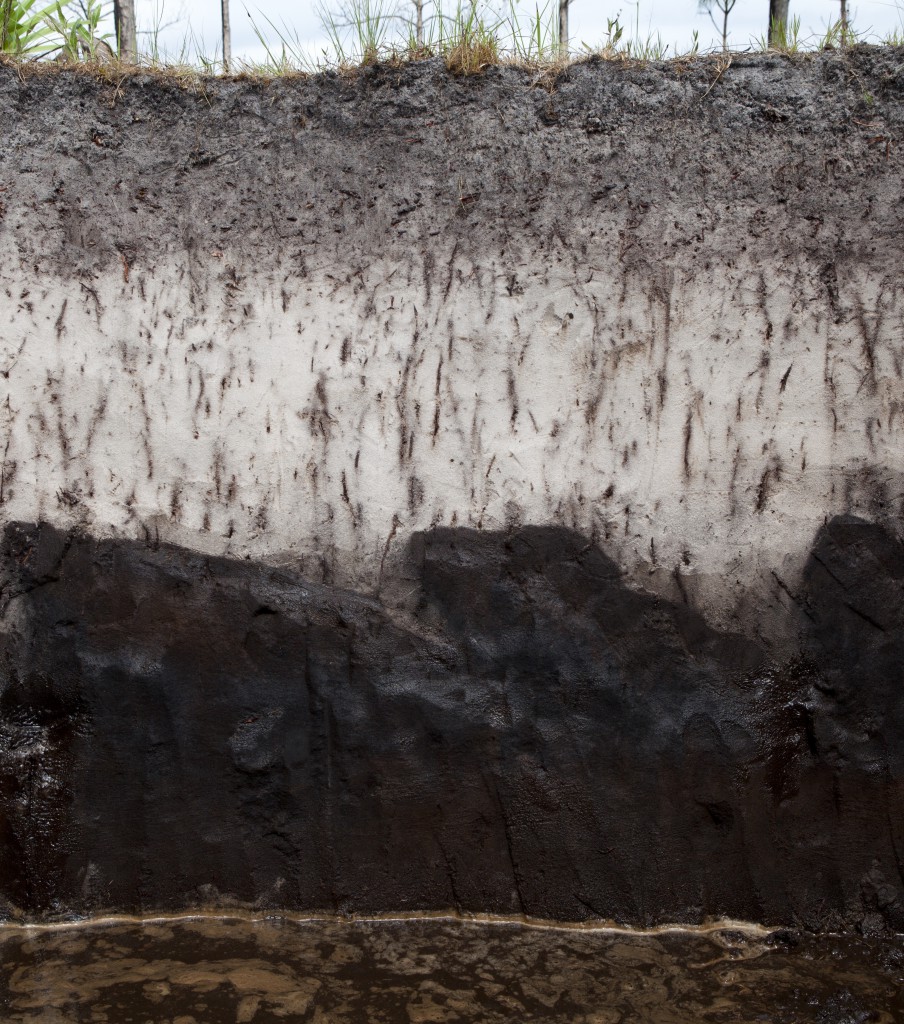
by Beth Bolles | Sep 16, 2021
Every so often while I am enjoying a walk through the garden, I notice a growth pattern on a plant that is just not normal. One of the more interesting patterns I see is called fasciation. This is a distortion of plant tissue that often causes flattened, curved, or the thinning of plant tissues. I recently noticed this on the stem of a Coral Porterweed in the Escambia County Demonstration Garden. The leaves were a normal shape but several inches of the stem were flattened and curved.

The distorted stem tissue of a Coral porterweed. Photo by Beth Bolles, UF IFAS Extension Escambia County.
So what is causing this type of growth pattern?
The most common cause of fasciation is usually some type of genetic mutation in the growing points of the plant. The other possible causes could be a physical injury to new tissues, a bacterial infection, chemical injury, or even an insect injury. Fasciation will be random in its occurrence and many gardeners may never have it occur on a plant in their yard. I have seen it on both woody and herbaceous plants in my own yard and in the demonstration gardens.
If you see a plant exhibiting this distortion of growth, you don’t need to take any action. If the growth is unsightly to you, prune out the affected plant tissue. It is probably best that you not propagate material from an affected plant just to prevent any transfer of the distortion to a new plant if the cause is genetic or from a living organism.

by Taylor Vandiver | Jan 22, 2015
You’re digging up a ridiculously stubborn patch of Florida betony when an earthworm crawls across your path. As you break apart the soil in your hands a world of active organisms is being sifted through your fingers. Fertile soil is teeming with beneficial microbes. It is estimated that there can be billions of microbes in a single gram of soil.
Bacteria, fungi, and protozoa are major players in soil microbial processes. They perform a variety of functions beneficial to soil and the plants growing in that soil. Other soil organisms of importance are nematodes, arthropods, and earthworms.

Soil Food Web. Photo courtesy USDA-NRCS.
Rather than being an inert material, soil houses a dynamic living ecosystem. Most soil organisms are too small to be seen, however they are still performing a great service to gardeners in many ways. These organisms are vitally important to improving the health of our soils. They also play a key role in making nutrients available to plants.
Soil organisms are naturally active during certain times of the year. Most are active during late spring and early summer when the soil is warm and moist. If the soil dries out during the summer months, soil organism activity will decline. During fall months, if there is rain or snow that moistens the soil while it is still warm, soil organisms may resume partial activity. As the soil cools in the fall, many organisms go dormant. It is important for gardeners to note that soil organisms help breakdown certain fertilizers and during the cool, dry months these fertilizers, if applied, will be less available for plants to take up.

Soil profile. Photo courtesy UF/IFAS.
Soil organisms are generally placed within three categories: organisms that are beneficial to plants, organisms that play a neutral role in plant growth, and organisms that are harmful to plants. Creating a favorable environment for beneficial soil organisms can improve plant growth and reduce garden maintenance. Encouraging their efforts is key to building a healthy fertile soil. Here are some ways you can encourage beneficial organisms in your soil:
- Add organic matter to the soil. Soil organisms require a food source from soil amendments (compost, crop residues) and/or mulch.
- Water effectively. Soil organisms are happiest in an environment that is damp, but not soggy. (Avoid over-irrigation because waterlogged soils will be harmful to beneficial soil organisms)
- Avoid unnecessary tilling, as it can destroy the mycorrhizae and soil structure. Instead of tilling, mulch for weed control.
- Avoid pesticide applications that aren’t necessary. Some fungicides, insecticides and herbicides are harmful to various types of soil organisms.




